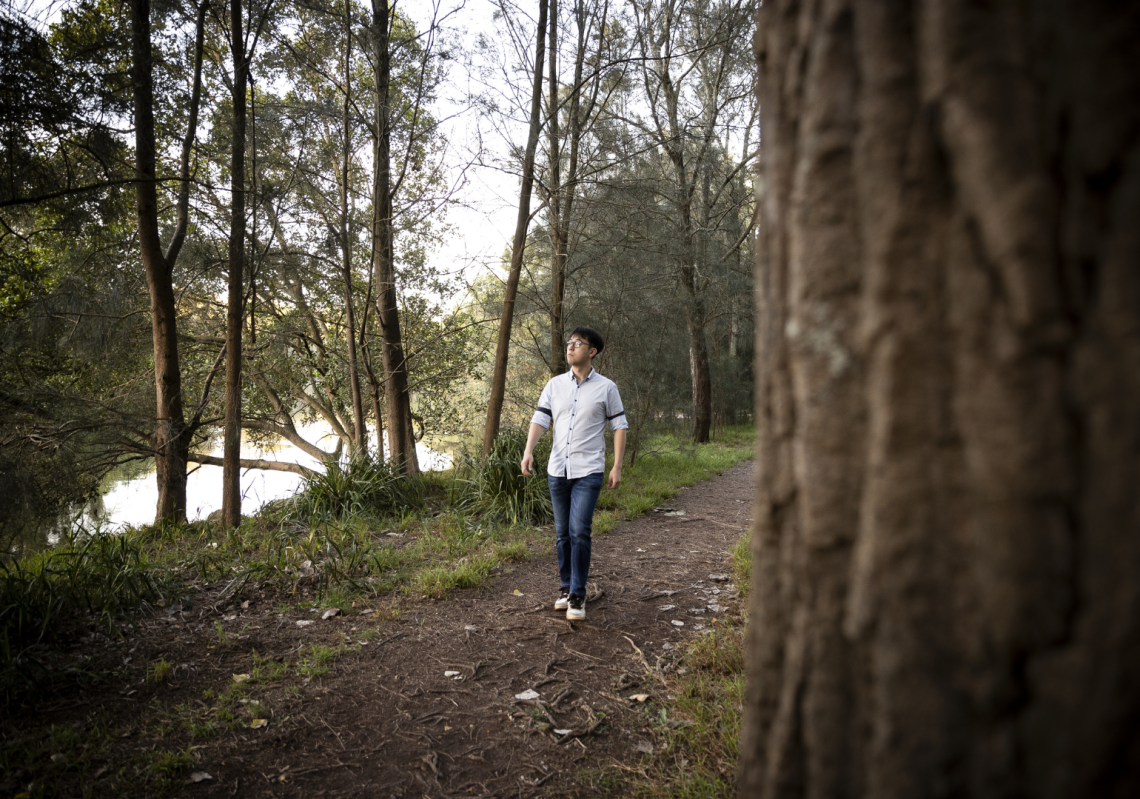Species of trees native to Australia boast slope reinforcement properties that are vital to fighting erosion and landslides, says this civil engineer PhD candidate.
Key points:
- Jiale Zhu’s research promotes the use of native tree species to bolster the “infrastructure” of soil and the natural environment.
- Sydney red gums were identified as the best candidate for slope reinforcement owing to their root system.
- Zhu has now shifted his focus from soil reinforcement to soil liquefaction.
Native trees are a natural method of slope reinforcement – but more needs to be done to understand how to augment these natural systems with modern engineering methods, according to Jiale Zhu GradIEAust, PhD candidate in the School of Civil Engineering at the University of Sydney.
Speaking to create, Zhu shared how native fauna bolsters soil stability, shared what trees proved most effective, and explained the intersection between civil engineers and geoscientists investigating the topic.
What’s the essential thrust of your research?
Zhu: “We are exploring innovative ways of mitigating natural hazards, landslides and other disasters through environmentally sustainable methods.

“Across my first three years of studies in civil engineering covering structural mechanics, fluid mechanics and soil mechanics, I always wanted to do something environmental. One of my supervisors told me about a project organised in collaboration with the School of Geosciences, and asked if I was interested in taking part.
“It’s been a pleasure to look at how we can harness nature’s own mechanisms to enhance slope stability in combination with existing engineering methods. The idea is to improve and make systems better rather than completely replace what we have right now.”
Talk us through the mechanics of shallow slope reinforcement.
“Nature has used plants as a form of slope reinforcement for thousands of years. For shallow slopes, which is what I’m interested in, trees are quite effective. Their strong main roots act like natural soil layers, while the network of lateral roots increase the strength of the surface soil. It’s both the vertical roots which anchors the soil, and the surface roots increasing the surface soil strength, that prevent erosion.
“By combining trees and shrubs with modern engineering solutions such as soil nails, steel meshes, rocks or geosynthetic clay liners, we can develop a more sustainable approach to landslide prevention.”
Zhu’s research has identified the Sydney red gum, or angophora, as the best candidate for shallow slope reinforcement owing to their root system.
“The robust taproot system of the Sydney red gum – where a dominant root takes hold of soil – provides an anchor against erosion,” Zhu explained in a University of Sydney media release.
“Its elastic roots also help it penetrate stiff soils, making it suitable for rocky sites or areas with deep groundwater. These conditions encourage it to lay down deep roots which further helps strengthen erosion control.”
You’re working alongside geoscientists in this project – how complementary are your respective approaches to the subject matter?
“Researchers from the School of Geosciences are more interested in the geology side of the debate. I’m more interested in how we can apply our findings in an engineering sense.
“We try to understand the data and see if it can be applied to a model that we can use to predict how effective certain trees will be – so that other engineers can make an informed decision when designing structures.”

Is Australia doing enough in native trees and erosion prevention research, and what’s next for you personally?
“There’s a lot more we can do to encourage people, including researchers, to get engaged. I’ve been reading a lot of articles in the media out of Europe, where engineers are doing a lot in this field. But we have completely different ecological environments; I see big potential for us to do more in the Australian context.
“I have now shifted my research focus from soil reinforcement to soil liquefaction. The shift is temporary and I am seeking to jump back to root reinforcement if future research or collaboration opportunities pop up.”
Professor Thomas Hubble of the School of Geosciences at the University of Sydney said that many native trees have surprisingly deep and extensive root systems.
“These have probably evolved so that the plants can access lowered water tables during periods of prolonged drought,” he explained. “One of the benefits of this characteristic behaviour is that tree roots strengthen the soil like reinforcing steel strengthens concrete; tree roots can also anchor a layer of soil to the underlying rock.
So in addition to the obvious environmental benefits in maintaining habitat, well-forested hillslopes are much more stable than cleared slopes and [are] less likely to experience landslides.”
For more from create digital, check out the below:
- Forging a new route across the Murray River
- What do engineers need to know about carbon farming legislation?
- Watch the company cleaning up artificial debris in space.




We will implement this in a design for bank reconstruction and stabilisation on the Hawkesbury River that we are in the middle of right now! Thank you